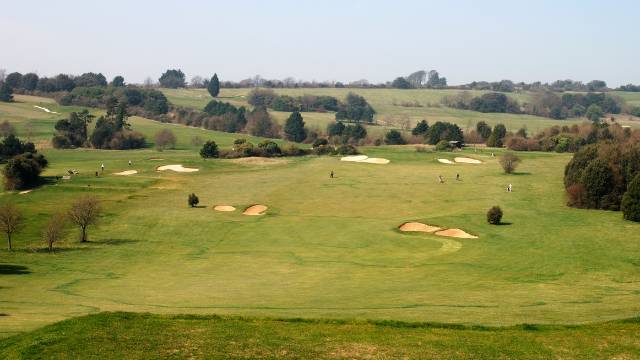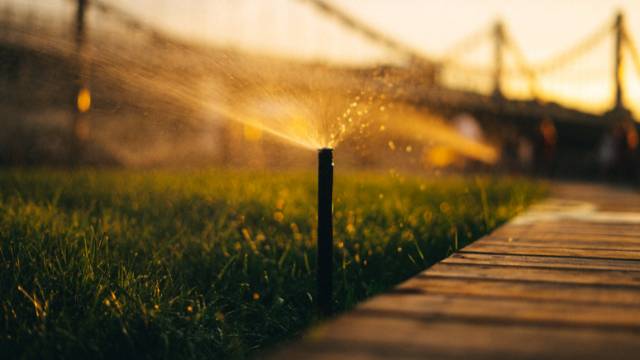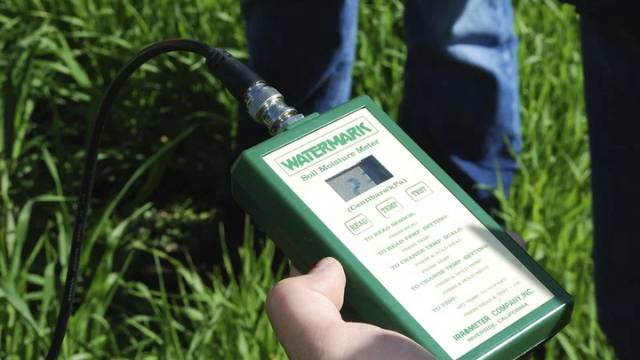Caring for Commercial Turf in Hot and Dry Weather
Looking after commercial grass during heatwaves and droughts can be tough. Whether it’s a sports ground, business park or public green space, smart planning can help keep turf healthy and avoid costly repairs.
How Heat and Drought Affect Turf
Commercial grass often deals with more stress than home lawns — like heavy use, compacted soil, and stricter appearance standards. During hot spells, grass can’t cool itself properly, and when there’s not enough water in the soil, it starts to suffer.
Cool-season grasses (like fescue, ryegrass and bluegrass) can struggle in summer, often going dormant to survive. Warm-season types (like Bermuda or Zoysia) handle heat better but still need careful care. Knowing what kind of grass you have helps you spot problems early and respond effectively.

Smarter Watering
During dry spells, ditch regular watering schedules and focus on watering when it’s actually needed. Water deeply and less often to encourage deeper roots — this helps turf cope better in the long run.
Water early in the morning (between 4–8am) to cut down on evaporation and disease risk. Avoid watering at midday or in the evening. Use zone-based irrigation so the most-used or visible areas get priority. Smart systems that adjust based on weather conditions can be a big help too.

Improve Soil and Roots
Good soil helps grass survive drought by holding more water. In busy areas, soil often gets compacted, which makes things worse. Aerating the soil (preferably in spring or autumn) and adding organic matter like compost can improve water retention and root growth.
Using soil moisture sensors can also help you water based on actual need, rather than guesswork.

Adjust Mowing and Maintenance
When it’s hot and dry, mow less often and raise your cutting height to keep grass longer — this helps it shade the soil and grow stronger roots. Always use sharp blades for a cleaner cut.
Avoid fertilising during drought as it can scorch the grass, create unsustainable growth and increase water needs - not what you want during a dry spell!
Fertilising should take place in early Spring with a lower nitrogen fertilizer containing more potassium (9.7.7) for less vigorous growth and to promote stronger root establishment. And then again in Autumn using a higher nitrogen content fertiliser (16.4.8) to encourage continued growth in the lower light levels with more nitrogen and less potassium.

Extra Tips for Tough Conditions
If needed, use temporary shade or walkways to protect key areas. Let less-important turf go dormant and focus resources where it matters most — just be sure to explain this to stakeholders so they know it’s temporary.
Plan overseeding for the right time of year — autumn for cool-season grass, spring for warm-season.
Think Long-Term
Having a drought plan in place before things get bad makes life easier. This should include clear steps to follow, emergency contacts, and a way to keep everyone informed.
Over time, consider switching to more drought-resistant grass types and investing in better irrigation or soil improvements. These upgrades save water, lower costs, and improve turf health all year round.
Keep an Eye on Things
Check turf regularly for early signs of stress — like grass turning greyish, staying flat after being walked on, or wilting in the morning. Use tech like drones or remote sensors to monitor larger areas quickly and spot issues early.
Final Thoughts
Keeping commercial turf healthy during heat and drought means being prepared, flexible, and informed. With the right watering, soil care and mowing habits — plus a plan for the future — you can keep your grass looking good without wasting resources.



